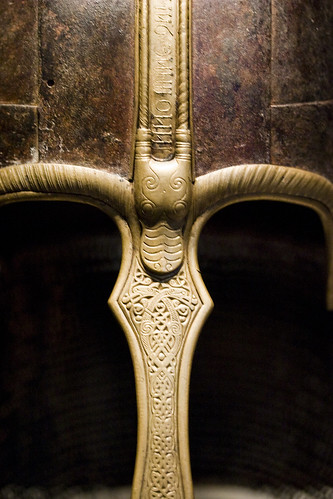 Submissions from the public have helped Oxford University academics put together a hoard of Anglo-Saxon treasures. Yet, there is no need to get your metal detectors out. The hoard in question is the worlds largest online archive of material concerning the Anglo-Saxons.
Submissions from the public have helped Oxford University academics put together a hoard of Anglo-Saxon treasures. Yet, there is no need to get your metal detectors out. The hoard in question is the worlds largest online archive of material concerning the Anglo-Saxons.
The virtual treasure consists of digital objects related to the teaching, study, or research of Old English and the Anglo-Saxon period of history, which will be made available online for free.
Project Woruldhord (Old English for world hoard), which called on the public to submit Anglo-Saxon teaching material after being inspired by the level of interest surrounding the discovery of the Staffordshire Hoard, has received between three and four thousand objects since opening in July.
The success of Project Woruldhord shows that the level of interest in the discovery of the Staffordshire hoard was not a one-off, said Dr Anna Caughey of the Faculty of English Language and Literature.
We have been amazed by the enthusiasm among the general public for the Anglo-Saxon period people of all ages have gone out and found Anglo-Saxon remnants in their area, recorded and photographed them and submitted them to the archive.
The materials submitted will be made freely available worldwide for educational purposes on the Project Woruldhord website. The Oxford team hopes the Woruldhord will prove to be a valuable teaching resource, allowing teachers and children and the wider public to access videos, recordings and images relating to the Anglo-Saxons and even teach themselves Old English.
Project Woruldhord Archive Highlights
Highlights of the archive include some of the finds from CSI Sittingbourne,previously unreleased pictures and X-rays of artefacts in the Staffordshire hoard and fromSutton Hoo, Anglo-Saxon land charters including a forged land document, Oxford University exam papers in Old English from the 19th Century and a 1966 TV film on the Anglo-Saxons, ‘1065 and all that’ -which hasn’t been seen for 44 years.
One contributor even designed, built and played an Anglo-Saxon lute for a video objects like this will be a great resource for teachers to get pupils to engage with this period, which is currently under-represented on schools curriculums, said Caughey.
Another interesting submission – and so far, my favourite -is Old English in Middle-Earth, a study guide to the Anglo-Saxon language which describes the influence of the Anglo-Saxons on Tolkiens characters, stories andspeech in The Lord of the Rings and The Hobbit.
If you want to speak like the Anglo-Saxons it will take a much more detailed course than this short introduction to learn all the grammar, but you can learn some sounds and some words and phrases that are of particular interest as you read The Lord of the Rings, reads the guide.
If you want to contribute to the digital hoard, you’ll need to hurry. Although the project won’t go live until later this year, the archive stops taking submissions today. Fittingly, as October 14this the date on which in 1066 the Battle of Hastings signalled the end of the Anglo-Saxon period (if you want to learn more about the shifts caused bythe Norman conquest, the PASEDomesday digital archive might be a good place to start).
My meagre contributions to Project Woruddhord? A picture of the York Helmet’s (beautifully crafted!) crest detail and the suggestion they ask Professor Drout if they can add his ‘Anglo-Saxon Aloud’ readings to the Woruldhord archive.